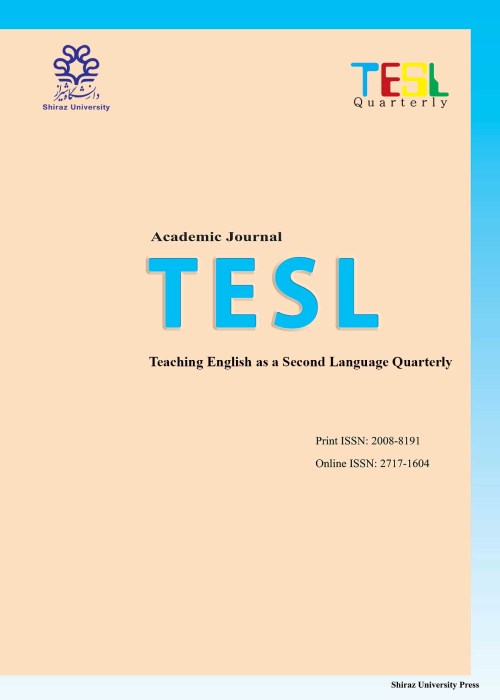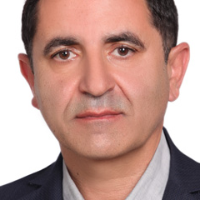Socio-cultural Patterns in Iranian High School Textbooks from the View point of Motivation for Research
Author(s):
Abstract:
IntroductionOne very important aspect of any textbook is its content in terms of the motivation it creates in the readers. This is specifically true in EFL textbooks where the learners need more than just content since content-wise, such books are not very much different from the learners’ world knowledge level. That is why material developers working in this area are usually consciously choosing content which interests the users of the texts morethan just the ordinary content they design for the level of proficiency they presuppose in developing the texts. High school texts developed in Iran seem to fail to meet the standards normally used in the preparation of materials of this type. The reason forthis drawback might be cultural in that the socio-cultural patterns observed tend to be those dictated by the authorities not very much aware of standards universally observed in the development of ELT materials. Incorporating the cultural and social aspects of language based on a sound basis in such texts is an important issue which seems to have been neglected. The present paper, therefore, investigates some cultural and socialpatterns in Iranian high school textbooks from the view point of motivation for research.The major question in this study is the following: Do socio-cultural patterns incorporated in ELT books used in high schools in Iran motivate the learners for research on their own in their area of study?Method This study is post-facto in nature since we compare two types of textsprepared diachronically, i.e. texts prepared before the Islamic Revolution Extended Abstracts of the Persian 107 Articles in English and those prepared in the past 30 years. The rationale for the selection of these two groups of texts is that the authors had a hunch and the situation was not very much different in the two periods of time in question, i.e. in terms of the type of materials prepared, despite the significant changes both in the academic study of English as a foreign or second language and also interms of the objectives of ELT in Iran. The model for analysis was that proposed by Talebinezhad & Aliakbari (2001). In their model, they take EIL in the sense Crystal (1997) suggests to be the paradigm we need to shift to. As Mackay (2002:1) says: “the teachingand learning of an international language must be based on an entirely different set of assumptions than the teaching and learning of any other second or foreign language.” The purpose of any material developed to teach English should therefore be to clarify these assumptions and advocate that they be considered in the design of English as an international language (EIL) teaching methods and materials.After reviewing some methods of teaching cultural and social aspects of language, three high school English textbooks in the two different periods mentioned are surveyed. The following three books were selected from the period before the Islamic Revolution for investigation: Manoochehri, P., Pazargadi, A., and Strin, J.(1354/1973). GradedEnglish Book (1). Tehran: Iranian Educational Textbooks Organization. Manoochehri, P., Pazargadi, A., and Strin, J.(1354/1973). Graded English Book (2). Tehran: Iranian Educational Textbooks Organization. Manoochehri, P., Pazargadi, A., and Strin, J.(1355/1974). Graded English Book (3). Tehran: Iranian Educational Textbooks Organization. As from the time after the Islamic Revolution, the following threebooks were selected for analysis: Birjandi, P., Norouzi, M. and Mahmoodi, G. (1376/1997). English Book (1). Tehran: Iranian Educational Textbooks Printing and PublishingCompany. Birjandi, P., Norouzi, M. and Mahmoodi, G. (1373/1994). English Book(2). Tehran: Iranian Educational Textbooks Printing and Publishing Company.Birjandi, P., Norouzi, M. and Mahmoodi, G. (1376/1997). English Book (3). Tehran: Iranian Educational Textbooks Printing and Publishing Company.Discussion and conclusion The findings show that the texts create very little motivation in the learners for research in general. One obvious reason statistically shown isThe Journal of Teaching Language Skills (JTLS) 108 the low number of passages on scientific issues as compared with ideological issues. Descriptive statistics are also presented to show how each text analyzed treats the issue of motivating the young learners who are in need of models for their education.Based on the analysis of the data and the findings, some suggestions are made as how to tackle the problem, among which the most important are the following: the necessity of paying special attention to the required framework for the present day Iranian society; incorporating cultural differences and an awareness of these differences for motivating learners to do research on their own; giving the learners models for their futureresearch careers; and above all, providing a more constructive environment for ELT by increasing the number of hours students are exposed to English, either in the classroom or outside. This, however, does not seem to be possible without the help of the authorities interested in the development of educational interest in the pupils.
Language:
Persian
Published:
Teaching English as a Second Language Quarterly, Volume:1 Issue: 1, Spring 2009
Pages:
41 to 69
magiran.com/p759448
دانلود و مطالعه متن این مقاله با یکی از روشهای زیر امکان پذیر است:
اشتراک شخصی
با عضویت و پرداخت آنلاین حق اشتراک یکساله به مبلغ 1,390,000ريال میتوانید 70 عنوان مطلب دانلود کنید!
اشتراک سازمانی
به کتابخانه دانشگاه یا محل کار خود پیشنهاد کنید تا اشتراک سازمانی این پایگاه را برای دسترسی نامحدود همه کاربران به متن مطالب تهیه نمایند!
توجه!
- حق عضویت دریافتی صرف حمایت از نشریات عضو و نگهداری، تکمیل و توسعه مگیران میشود.
- پرداخت حق اشتراک و دانلود مقالات اجازه بازنشر آن در سایر رسانههای چاپی و دیجیتال را به کاربر نمیدهد.
In order to view content subscription is required
Personal subscription
Subscribe magiran.com for 70 € euros via PayPal and download 70 articles during a year.
Organization subscription
Please contact us to subscribe your university or library for unlimited access!



